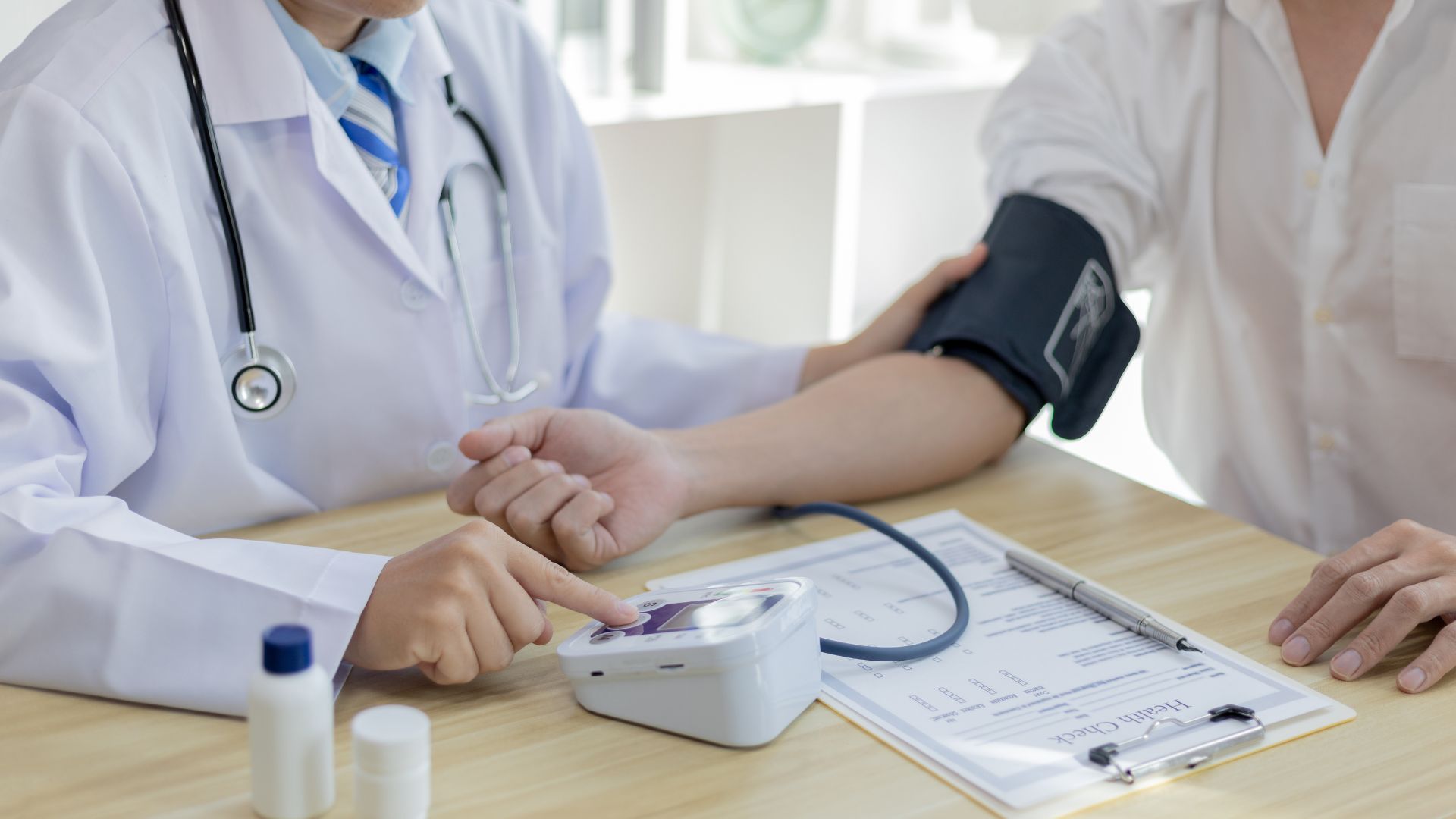Preventive screenings are an integral part of maintaining women’s health at every stage of life. Regular medical check-ups play a crucial role in preventing and detecting various diseases early on.
Preventive screenings allow doctors to monitor women’s health, identify any changes or abnormalities at an early stage when they have not yet manifested obvious symptoms. This is particularly important because many serious conditions, such as cancer and cardiovascular diseases, can develop asymptomatically in their early stages.
Regular medical check-ups involve checking various health indicators, such as blood pressure, cholesterol levels, bone health, as well as screening for cancers and infections. These check-ups help identify risk factors and prevent the development of many diseases.
One of the key benefits of regular screenings is the early detection of diseases. For example, early detection of cancer allows for treatment to begin at an early stage, significantly increasing the chances of full recovery. Similarly, early detection of cardiovascular diseases enables measures to be taken to prevent serious complications like heart attacks or strokes.
Thanks to early detection and timely treatment, the effectiveness of therapy is significantly increased. Doctors can offer gentler and more effective treatments at the early stages of a disease, reducing the risk of complications and improving the prognosis.
Therefore, let’s look at the TOP 5 screenings every woman should undergo.
1. Pap Smear (Pap Test)
The Pap smear plays a crucial role in the early detection of precancerous changes in the cervix. This method allows for the identification of cell abnormalities that may indicate the onset of cervical cancer. Here’s a detailed explanation and recommendations for undergoing a Pap smear:
What is a Pap smear and its purpose? A Pap smear is a procedure where a doctor collects cell samples from the cervix using a small brush or spatula. These samples are then analyzed in a laboratory to detect any cellular changes that may indicate precancerous conditions or infections.
Frequency recommendations:
- For women aged 21 to 29:
- It is recommended to have a Pap smear every 3 years. This regular monitoring helps track the health of the cervix in this age group.
- For women aged 30 and older:
- A combination of Pap smear and HPV testing every 5 years is advisable. The HPV test helps identify high-risk strains of the human papillomavirus, many cases of cervical cancer are linked to HPV infections.
Early detection of precancerous conditions through a Pap smear allows for treatment to begin at an early stage, significantly increasing the chances of complete recovery. Regular screening with the Pap smear can prevent the development of cervical cancer, which is often successfully treated in its early stages.
A Pap smear is an essential procedure for women starting in early adulthood. Regularly following the test recommendations allows for the maintenance of cervical health and the timely identification of any changes that require medical intervention. It is important to follow your doctor’s advice regarding the frequency and method of conducting Pap smears to ensure the highest effectiveness of screening and protection against cervical cancer.
2. Mammography
Mammography is a vital screening method for detecting breast cancer at an early stage, even before symptoms appear. This X-ray examination allows doctors to see changes in breast tissue, such as tumors or calcifications, which could be signs of cancer.
Recommendations for starting age and frequency:
- Starting mammography at age 40:
- For women without significant risk factors, it is recommended to begin annual mammograms at age 40. This age is chosen based on statistical data showing an increased risk of breast cancer starting at this age.
- Early start for high-risk women:
- Women with a high genetic risk (e.g., family history of breast cancer or presence of BRCA1 and BRCA2 gene mutations) may need to start mammography earlier, as advised by their doctor.
The mammography process is simple and usually takes a short amount of time:
- Preparation and procedure: A woman stands in front of the mammography machine, a special apparatus for X-ray imaging of the breasts. The breast is gently placed on a plate and compressed to get clear images. This compression is necessary for even tissue distribution and improved image quality.
- Duration: The procedure usually takes only a few minutes per breast.
- Discomfort: The compression may cause some discomfort or unpleasant sensations, but it typically lasts only a few seconds.
Mammography is not only an effective way to detect breast cancer early, but also a life-saving tool. Regular screening mammograms allow for the detection of the disease at a stage when the chances of recovery are significantly higher.
3. Bone Density Measurement (DXA)
Bone density measurement (densitometry, DXA) is a specialized type of X-ray examination used to assess bone density. It helps in diagnosing osteoporosis and determining the risk of bone fractures. Osteoporosis is characterized by loss of bone mass and structural changes, making bones more brittle and prone to fractures even with minimal trauma.
Risk groups for osteoporosis and the need for bone density measurement:
- Postmenopausal women:
- After menopause, women experience a natural decline in estrogen levels, leading to rapid bone mass loss and an increased risk of osteoporosis.
- Family history of osteoporosis:
- Having close relatives diagnosed with osteoporosis increases the likelihood of its development.
- Use of hormonal medications or glucocorticoids:
- Long-term use of hormonal medications or glucocorticoids can negatively affect bone density, increasing the risk of osteoporosis.
Measures to maintain bone health:
- Healthy diet:
- It is recommended to consume foods rich in calcium (e.g., dairy products, dark leafy greens, seafood) and vitamin D (fish, eggs, fortified foods).
- Physical activity:
- Regular exercise, especially weight-bearing and strength-training activities, helps maintain bone mass.
- Moderate alcohol consumption and smoking cessation:
- Excessive alcohol consumption and smoking negatively impact bone health, so moderating alcohol intake or quitting smoking helps reduce the risk of osteoporosis.
Bone density measurement is an important step in the early detection of osteoporosis and the prevention of its complications. Conducting this procedure based on risk, as determined by a doctor, allows for timely initiation of necessary treatment and prevention of disease progression.
4. Infection Screenings
Regular screenings for infections, such as HIV and other sexually transmitted infections (STIs), are crucial for maintaining women’s health. These screenings not only allow for timely treatment but also prevent potential serious health consequences.
- HIV (HIV infection):
- Testing for HIV is important for all women, especially when changing sexual partners, starting new relationships, or if there are other risk factors.
- Sexually transmitted infections (e.g., chlamydia, gonorrhea, syphilis):
- Regular screenings for these infections are recommended for all sexually active women and are especially important during pregnancy and before planning a pregnancy.
5. Other Important Screenings
Blood Pressure and Cholesterol Monitoring Regular monitoring of blood pressure and cholesterol levels is essential for preventing cardiovascular diseases, which are among the leading causes of mortality among women.
- Blood Pressure:
- It is recommended to measure blood pressure at least once a year for all adult women. Elevated blood pressure can indicate hypertension, which increases the risk of stroke, heart attack, and other cardiovascular diseases.
- Cholesterol:
- Measuring cholesterol levels is recommended to begin at age 20 and repeat every 4-6 years for women without risk factors. For women with a higher risk of cardiovascular diseases or a family history of hypercholesterolemia, more frequent checks are advised.
Eye Examinations Regular eye exams are important for detecting eye diseases and maintaining good vision. Early detection and treatment of conditions like glaucoma and cataracts help prevent or slow down vision loss.
- Glaucoma:
- This disease often progresses without symptoms in its early stages. Regular exams help detect increased intraocular pressure and begin treatment to prevent vision loss.
- Cataracts:
- Regular exams help detect changes in the lens of the eye, which is the first sign of cataracts. Early treatment can significantly improve vision and quality of life.
Regular screenings are indeed vital for health. They help identify problems at the earliest stage when treatment can be most effective. The earlier you detect a condition, the easier it is to treat. Monitoring blood pressure and cholesterol is also crucial to prevent more serious diseases. Additionally, these measures boost confidence in your health. All these together make life better and longer. If you want to stay healthy and active, screenings are the first step.







